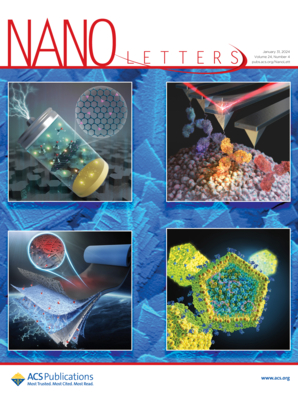Phase Equilibrium Regulation in ZIF-67-Derived Electrocatalysts: Degradation Mechanism and Stability Enhancement for Oxygen Evolution Reaction.
IF 9.1
1区 材料科学
Q1 CHEMISTRY, MULTIDISCIPLINARY
引用次数: 0
Abstract
Metal-organic frameworks (MOFs) like ZIF-67 are promising electrocatalysts due to their tunable structures and porosity, but their instability in aqueous electrolytes requires a deeper understanding. This study investigates the structural evolution and degradation mechanism of ZIF-67 during the oxygen evolution reaction (OER) in alkaline media. Using atomic-resolution identical-location transmission electron microscopy, we reveal its transformation pathway: ZIF-67 first converts to Co(OH)2, then progressively evolves into catalytically active CoOOH and inactive CoO species, ultimately establishing a dynamic three-phase equilibrium under operational conditions. Prolonged cycling drives the irreversible conversion of Co(OH)2 to CoO, depleting the Co(OH)2 reservoir required to sustain the active CoOOH phase via equilibrium dynamics. By lowering the reaction temperature (e.g., to 0 °C), Co(OH)2 preservation improves stability, reducing overpotential increases after 5000 cycles to just 9 mV (10 mA cm-2) and 15 mV (100 mA cm-2), outperforming room-temperature performance. These insights highlight phase equilibrium regulation as a key strategy for enhancing the MOF-derived catalyst durability.zif -67衍生电催化剂的相平衡调节:析氧反应的降解机理和稳定性增强。
像ZIF-67这样的金属有机框架(mof)由于其可调节的结构和孔隙度而成为很有前途的电催化剂,但其在水溶液中的不稳定性需要更深入的了解。研究了ZIF-67在碱性介质中析氧反应(OER)的结构演变及其降解机理。利用原子分辨同位透射电镜,揭示了ZIF-67的转化途径:ZIF-67首先转化为Co(OH)2,然后逐步演化为催化活性CoOOH和非活性CoO,最终在操作条件下建立动态三相平衡。长时间的循环驱动Co(OH)2向CoO的不可逆转化,耗尽了通过平衡动力学维持活性CoOOH相所需的Co(OH)2储层。通过降低反应温度(例如,至0°C), Co(OH)2保存提高了稳定性,将5000次循环后的过电位增加减少到仅9 mV (10 mA cm-2)和15 mV (100 mA cm-2),优于室温性能。这些见解强调相平衡调节是提高mof衍生催化剂耐久性的关键策略。
本文章由计算机程序翻译,如有差异,请以英文原文为准。
求助全文
约1分钟内获得全文
求助全文
来源期刊

Nano Letters
工程技术-材料科学:综合
CiteScore
16.80
自引率
2.80%
发文量
1182
审稿时长
1.4 months
期刊介绍:
Nano Letters serves as a dynamic platform for promptly disseminating original results in fundamental, applied, and emerging research across all facets of nanoscience and nanotechnology. A pivotal criterion for inclusion within Nano Letters is the convergence of at least two different areas or disciplines, ensuring a rich interdisciplinary scope. The journal is dedicated to fostering exploration in diverse areas, including:
- Experimental and theoretical findings on physical, chemical, and biological phenomena at the nanoscale
- Synthesis, characterization, and processing of organic, inorganic, polymer, and hybrid nanomaterials through physical, chemical, and biological methodologies
- Modeling and simulation of synthetic, assembly, and interaction processes
- Realization of integrated nanostructures and nano-engineered devices exhibiting advanced performance
- Applications of nanoscale materials in living and environmental systems
Nano Letters is committed to advancing and showcasing groundbreaking research that intersects various domains, fostering innovation and collaboration in the ever-evolving field of nanoscience and nanotechnology.
 求助内容:
求助内容: 应助结果提醒方式:
应助结果提醒方式:


